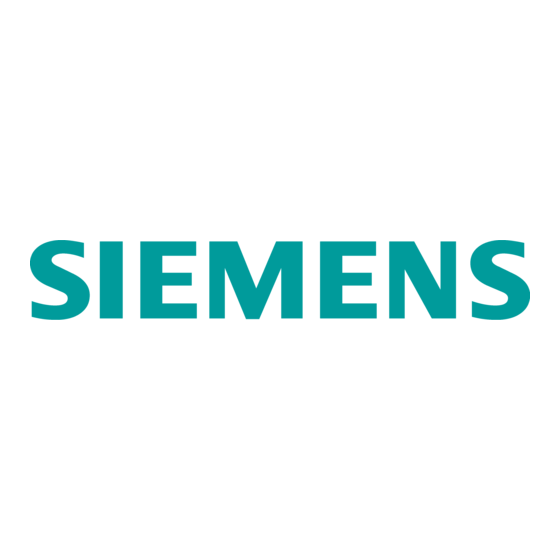
Summarization of Contents
1 Introduction
1.1 About the manual
Manual's purpose and target audience.
1.2 Further information
Additional resources and documentation.
1.3 Notational conventions
Symbols and text conventions used in the manual.
2 Important notes
2.1 Notes on application of these project planning instructions.
Scope and applicability of the planning instructions.
2.2 Tools required
Software tools needed for configuration and diagnosis.
3 Guidelines for project planning
3.1 Limitations
Detector zone and line fault limitations.
3.2 Guidelines for failure of the display unit and signal processor
System behavior during unit failures.
3.3 Overvoltage protection measures
Protection against voltage surges.
4 Project planning for control and indicating panels
4.1 Control and indicating panel selection
Criteria for selecting control and indicating panels.
4.2 Selecting the installation location
Requirements for installing panels.
4.3 SIGMASYS C control and indicating panel assignment
Component layout and slot assignment for SIGMASYS C.
4.4 SIGMASYS M control and indicating panel assignment
Component layout and slot assignment for SIGMASYS M.
5 Interfaces
5.1 Overview of interfaces
Summary of available interfaces and connections.
5.2 Printers
Details on compatible protocol and thermal printers.
5.3 GMA Manager (TOPSIS)
Connecting and using the GMA Manager.
6 Functions
6.1 Event implementation
How events are processed and displayed.
6.2 Daytime/Nighttime
Functionality for day/night mode switching.
6.3 Alarm organization
Process for managing alarms and reconnaissance.
6.4 Two-detector-zone dependency
How two detector zones trigger alarms.
6.5 Two-detector dependency
How two detectors trigger alarms.
6.6 Alarm buffering
Buffering of alarm signals.
6.7 Event delay
Setting delays for event forwarding.
6.8 Virtual inputs and outputs
Using virtual I/O for signaling and automation.
6.9 Changing ÜE assignment by command (from V3.2)
Modifying ÜE assignment via commands.
6.10 Switching detector algorithms by command (from V3.2)
Changing detector evaluation algorithms.
6.11 Time synchronisation
Synchronizing system time.
6.12 Variable SIGMALOOP cycle time
Adjusting SIGMALOOP cycle time.
6.13 BMT/IMT mixed mode
Operating BMT and IMT branches simultaneously.
6.14 Alarm counters
Parameterizing and displaying alarm counters.
7 Control unit connections
7.1 Local alarm (LA)
Connecting and operating local alarm devices.
7.2 Alarm transceiver (AT)
Connecting alarm receivers for responsible services.
7.3 Key depot (KD)
Installing and connecting key depots.
7.4 Fire brigade operating panel (FBF)
Using the fire brigade operating panel for status display and operation.
8 Transponders and loop elements
8.1 General
General information on loop elements and their use.
8.2 Loop elements
Details on various loop elements like transponders.
8.3 Outputs
Information on output modules and their functions.
8.4 Technical data, voltage, current, dimensions
Technical specifications for loop elements.
8.5 Cycle time for signals from transponders and contact couplers
Selecting cycle times for signal transmission.
9 Special control facilities
9.1 Extinguishing control module
Configuring extinguishing zones and systems.
9.1.1 Gas extinguishing systems
Specific commands and settings for gas extinguishing systems.
9.1.2 Preaction sprinkler extinguishing control module
Activating preaction sprinkler systems.
9.1.3 SIGMALOOP extinguishing interface
Using SIGMALOOP for extinguishing functions.
9.1.4 FDnet extinguishing interface
Using FDnet for extinguishing functions.
9.2 Close-and-retain systems (FSA)
Functionality of FSA for fire section door control.
9.2.1 List of approved power supply units
Approved power supply units for FSA systems.
10 Programming of control facilities
10.1 Description of control pattern
Defining control patterns for system functions.
10.1.1 AL/LA – Alerting facilities
Configuring alerting facilities for fire alarms.
10.1.2 EV – Evacuation alarm (internal alarm)
Configuring evacuation alarms for building safety.
10.1.3 Control facility (ST)
Configuring control equipment response to signals.
10.1.4 Monitored control lines according to VdS via transponder SPF 3500
Monitoring control lines as per VdS standards.
10.1.5 Display (ANZ)
Using displays for detector and output status.
10.1.6 Close-and-retain system (FSA) control facility and fire section control facility
Configuring FSA and fire section control.
10.1.7 Detector display and event display control pattern
Control patterns for detector and event displays.
10.2 Freely configurable control parameters from V3.2
Defining custom control behavior.
10.3 Overview of control criteria
Summary of control criteria and patterns.
11 Power supply
11.1 Mains supply
Connecting to the main power supply.
11.2 Earthing
Proper grounding procedures for panels.
11.3 Power supply
Requirements for independent power sources.
11.4 Battery
Battery types and installation for backup power.
11.5 Current requirement calculation
Calculating system current draw.
11.6 Measuring the battery capacity
Determining required battery capacity and bridging times.
11.7 Power supply unit for the peripheral transponder/indicator panel
Powering peripheral devices.
11.7.1 SIGMASYS empty housing
Using empty housing for power supply units.
12 Monitored lines
12.1 GMG-S module
Features and specifications of the GMG-S module.
12.2 Pulse-polling technology in SIGMASYS PMG-S
How pulse-polling works with PMG-S.
12.3 SIGMASYS monitored line
Principles of SIGMASYS monitored lines (spur/loop).
12.4 Line lengths in the loop/spur
Maximum cable lengths for loop and spur connections.
12.5 Load factors
Understanding and calculating load factors.
12.6 FDnet – connecting SintesoTM elements
Connecting Sinteso elements to FDnet.
12.6.1 Detector network
FDnet detector network topology and cabling.
12.6.2 Supported Sinteso™ elements
List of supported Sinteso elements.
12.6.3 Parameter sets for FDOOT, FDO and FDT detectors
Detector parameter sets.
12.6.4 Parameter sets for linear smoke detector FDL241-9
Parameter sets for linear smoke detectors.
12.6.5 Parameter sets for alarm devices
Parameter sets for alarm sounders.
12.6.6 Calculating the maximum number of elements and length of lead
Calculating maximum elements and cable length.
12.6.7 Load factors
Calculating load factors for FDnet elements.
13 SIGMANET
13.1 Features
Key features and capabilities of SIGMANET.
13.2 Operation
How to operate SIGMANET systems.
13.3 AT release
Managing alarm transceiver (AT) releases.
15 Project planning examples
15.1 Layout of a SIGMALOOP at an existing star-configuration line network
Example of planning SIGMALOOP in a star network.
16 Appendix
16.1 Software dependant features
Features available based on software version.
16.2 Technical Features
Detailed technical specifications of components.
16.3 Terminology
Glossary of technical terms used in the manual.













Need help?
Do you have a question about the SIGMASYS M and is the answer not in the manual?
Questions and answers